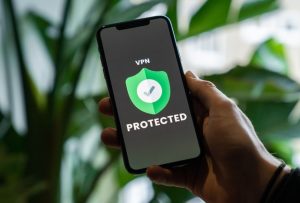Data breaches are becoming increasingly common, and the consequences can be devastating. To protect your business, it is essential to understand the tactics for avoiding a Data breach. In this article, we will discuss 10 must-know tactics for avoiding a data breach and keeping your data safe. Cybercrime is on the rise and businesses of all sizes need to be aware of the risks associated with a potential data breach. It’s important to move quickly to secure systems and fix any vulnerabilities that may have caused the breach in order to prevent further damage or multiple breaches from occurring.
Data breaches can have far reaching consequences including fines, loss of consumer trust, weeks of frustration trying to recover lost information, and more. It’s not just about avoiding lawsuits either; Preventing data breaches is key for protecting your business’ bottom line as well as its reputation. Knowing what could happen if you fall victim to a security breach is essential in understanding how best to protect yourself from one in the first place.
In this article we’ll explore best practices for avoiding data loss and keeping sensitive information secure so you can rest assured that your business won’t become another statistic when it comes to cybercrime attacks or other security threats. We’ll also answer some frequently asked questions such as: What are data breaches? How do they occur? And what steps should I take if I experience one? By understanding these topics better you’ll be able equip yourself with knowledge on how best avoid them altogether – giving you peace of mind that your business will remain safe from harm due to cybercrime attacks or other security threats.
1. Have a Comprehensive Security Plan
Having a comprehensive security plan in place is essential for avoiding a data breach. This plan should include an inventory of all data and where it is stored, policies and procedures to ensure the data is kept secure, regular security monitoring and testing to detect any potential vulnerabilities, and a clear chain of command for responding to security incidents. By having this plan in place, organizations will be better prepared to respond quickly to any potential threats and minimize damage. It should also include compliance with applicable federal, state, and local laws governing security incident response as well as expeditious handling of security incidents. Additionally, organizations should update their plans regularly in order to stay up-to-date with the latest regulations. If you need help developing or updating your organization’s comprehensive security plan or have experienced a data breach event, contact Silicon Valley Law Group at (408) 573-5700 for assistance.
2. Invest in Cyber Security
Investing in cyber security is an essential step to avoiding a data breach. Firewalls, strong encryption, intrusion detection systems and anti-malware software are all important measures that should be taken to protect your data from potential threats. NITAAC can help you procure the necessary tools for a strong cybersecurity strategy that will provide a good security posture against malicious attacks. Endpoint threats such as file-based and fileless malware can be prevented with the use of data encryption, which is required by many regulations. Prevention measures also include sound security policies, well-designed system architecture, properly configured firewalls and strong authentication programs. To ensure complete protection against cyberattacks, agencies should also invest in practices related to governance and risk management, access rights and controls, data loss prevention, mobile security and incident response.
3. Train Your Employees
Training your employees on cyber security is an essential step to avoiding a data breach. By educating your staff on the basics of data security policies and procedures, identifying and responding to potential threats, safe internet usage and social media practices, as well as safely handling data and passwords, you can better protect your business from any potential risks. Additionally, it is important to train employees in security principles such as requiring strong passwords and establishing best practices for preventing cyberattacks. This includes securing networks with antivirus software that is regularly updated, enabling multi-factor authentication when possible, recognizing common cybercrime risks such as phishing or social engineering attacks, understanding the importance of protecting sensitive information and mitigating chances of exposure. Security awareness training should also be provided to third-party stakeholders like contractors or business partners so they understand how to protect confidential information. By taking these steps you can ensure that your business remains secure from any malicious actors looking to exploit vulnerabilities in order to gain access to sensitive data.
4. Limit Access to Sensitive Data
Limiting access to sensitive data is a key step in avoiding a data breach. User access security is the collective procedures that ensure only authorized personnel have access to the data, and it should be granted on a need-to-know basis. This means that only those who have a legitimate business need should be given access, and this should be regularly reviewed. Data protections are also necessary to reduce risk by limiting the number of people with access to critical system security controls. Technical measures may also need to be put in place so that personal data can be restored in case of any disruption or unauthorized use. All these steps are essential for ensuring that sensitive data remains secure and out of the wrong hands, which could lead to fraud or identity theft if not properly managed.
5. Regularly Monitor Your Network
Regularly monitoring your network is an essential step to avoiding a data breach. Establishing robust network security measures, such as an intrusion detection system (IDS), can help detect suspicious activity and alert you when it occurs. This includes watching for any unauthorized logins, access attempts, or data transfers. Additionally, using complex passwords is the first line of defense against hackers who may try to gain access to your internal network from the outside. It’s also important to be aware of any connected devices that could be vulnerable to attack; for example, if your “smart” kitchen stove has a simple password, it could be used by hackers to access your wireless network.
When suspicious activity is detected on your network or unauthorized access attempts are made, it’s important that you take action immediately and notify law enforcement and other affected businesses or individuals as necessary. You should also determine what legal requirements apply in the event of a data breach so that you can respond appropriately and minimize damage caused by the incident.
By regularly monitoring your network for suspicious activity and taking appropriate action when necessary, you can prevent costly data breaches and ransomware attacks before they occur. Taking these steps will help ensure that all of your business’s sensitive information remains secure from malicious actors looking to exploit vulnerabilities in order to gain access or cause harm.
6. Implement Multi-Factor Authentication
Multi-factor authentication (MFA) is an essential tool for avoiding a data breach. It adds an extra layer of security by requiring users to enter additional information, such as a PIN or biometric data, in order to access sensitive data. This one-stop authentication method enables users to maintain one account that automatically logs them in to multiple applications or websites with a single ID. Two-factor authentication (2FA) and multifactor authentication (MFA) are two different approaches that can be used for this purpose.
Two-factor Authentication (2FA) requires two methods of verification in order to authenticate identity, such as a username and password combination plus another form of identification like a one-time passcode sent via text message or email. Multifactor authentication (MFA), on the other hand, is more secure because it requires multiple forms of verification before granting access. This could include something like entering both your username and password plus providing biometric data like fingerprints or facial recognition scans.
A second factor (2F) adds an extra layer of unauthorized access protection by prompting the user to provide an additional means of authentication such as a PIN code sent via text message or email after they have entered their username and password correctly. By implementing MFA, you can ensure that only authorized individuals have access to your accounts and the sensitive information they contain while also making it more difficult for hackers to gain unauthorized entry into your systems.
Multi-factor authentication is becoming increasingly important in today’s digital world where cyber threats are constantly evolving and becoming more sophisticated every day. By implementing MFA on all online accounts, you can ensure that only those who should have access will be able to gain entry while also making it much harder for hackers who may try using stolen credentials from other sites or services they’ve breached previously. With 2F enabled on all accounts, you can rest assured knowing that even if someone does manage to get their hands on your login details they won’t be able to gain entry without providing additional verification information first – making it much harder for them succeed in their attempts at breaching your system’s security protocols
7. Regularly Back Up Your Data
Regularly backing up your data is an essential step to avoiding a data breach. To ensure that you have a copy of your data in case of a disaster, the 3-2-1 rule is one of the best backup strategies to have. This means creating three different copies of your data and storing them on two different storage devices or cloud-based solutions. It’s recommended that important data be backed up at least once a week, but preferably once every twenty-four hours. These backups can be done manually or automatically depending on what works best for you.
Nowadays, having effective Backup storage is one of the safest ways to protect your data from accidental loss, corruption, and unauthorized access. To make sure you can recover important photos, documents, and other personal information stored on your device in case something goes wrong, it’s important to take steps such as routinely making additional copies of this information and restoring backups when needed. Additionally, recovering files deleted by mistake should also be part of this process so that no valuable information is lost forever due to an accident or malicious attack.
By regularly backing up your data with these strategies in place, you’ll be able to rest assured knowing that all necessary precautions are taken when it comes to protecting yourself from potential breaches and other security threats.
8. Use Strong Passwords
Creating strong passwords is an essential step in avoiding a data breach. A strong password should be a combination of uppercase and lowercase letters, numbers, and special characters. It is important to change your passwords regularly and never share them with anyone. To ensure the best protection for your accounts, you should use multi-factor authentication in addition to a strong password.
When creating a password, it is important to make sure that it contains both uppercase and lowercase letters, numbers, and symbols. This will help make it more difficult for someone to guess or break into your account. Additionally, you should never share your passwords with anyone else as this could lead to unauthorized access of your accounts. It is also recommended that you change your passwords on a regular basis in order to keep them secure from potential hackers or malicious actors who may try to gain access without permission.
Using multi-factor authentication can also help protect against data breaches by adding an extra layer of security when logging into accounts or websites online. This type of authentication requires users to enter two pieces of information such as their username/password combination along with another form of verification such as entering a code sent via text message or email before they can gain access. By using this method in addition to having strong passwords for all accounts on the computer system can provide an additional layer of protection against potential threats from outside sources trying to gain unauthorized access into sensitive information stored online or on the computer system itself.
Overall, using strong passwords combined with multi-factor authentication are two key steps that must be taken when attempting to avoid data breaches from occurring within any organization’s network infrastructure or computer systems containing sensitive information about customers or employees alike . By following these simple steps one can ensure that their personal information remains safe while also protecting their business’s reputation from any potential damage caused by malicious actors trying gain unauthorized access into confidential records stored online or on the company’s internal networks
9. Monitor Your Third-Party Vendors
Before onboarding any third-party vendors, it is essential to assess them for risk management. This includes incorporating risk management into your contracts and keeping an inventory of all in-use vendors. It is also important to continuously monitor your third-party vendors to ensure they are following your security policies and standards. Additionally, you should regularly review any contracts you have with them to make sure that they are adhering to the security protocols outlined in the agreement.
In the event of a data breach, it is important for organizations to notify law enforcement, other affected businesses, and affected individuals as well as determine their legal requirements. To avoid such a situation from occurring in the first place, organizations must perform due diligence before hiring third-party firms or suppliers by assessing their risk management capabilities and incorporating these into their contracts. Furthermore, organizations should keep an inventory of all in-use Vendors and continuously monitor them for compliance with security policies and standards outlined in any agreements between both parties.
Regular security audits can help identify potential risks associated with third parties before they become a problem; this includes reports on how secure data is being handled by each vendor as well as how secure systems are being maintained by each vendor’s IT team. Organizations should also be aware of any changes made within their own organization that could affect the security posture of its third parties; this could include changes such as new software implementations or personnel changes that may require additional training or oversight from internal teams. By proactively monitoring these factors, organizations can better protect themselves against potential data breaches caused by third party vendors who may not be following best practices when handling sensitive information or systems access rights granted through contractual agreements between both parties.
10. Have a Response Plan in Place
Having a response plan in place is an essential step to avoiding a data breach. This plan should include details on how the organization will respond to a breach, who is responsible for each step, and contact information for any outside parties that may need to be contacted in the event of a breach. It’s important to evaluate your legal responsibilities and determine what constitutes a cybersecurity incident so you can be prepared with an effective response plan. An incident response plan should be set up with specific phases and areas of need that address suspected data breaches. Additionally, it’s beneficial to have a pre-assembled team ready to respond quickly and efficiently when needed. Recent data breaches have highlighted the importance of having post-cyber event plans that consider issues such as notification requirements, remediation steps, communication strategies, and more. By having these measures in place ahead of time, organizations can better prepare themselves for potential data breaches and minimize their impact on customers or other affected parties.
Conclusion
Data breaches can have serious consequences, so it is essential to understand the tactics for avoiding them. This article has outlined 10 must-know tactics that businesses should follow in order to protect their data and keep their business safe. These include notifying law enforcement, other affected businesses, and affected individuals when a breach occurs; determining legal requirements; exploring best practices for avoiding data loss and keeping sensitive information secure; discovering compromised IT systems, networks or data; inventorying all of the business’s data; and understanding the value of cybersecurity. Additionally, businesses should be aware of news stories about cybersecurity breaches as they can provide valuable insight into how to protect against them. By following these steps, businesses will be better equipped to prevent a devastating data breach from occurring.




Be First to Comment